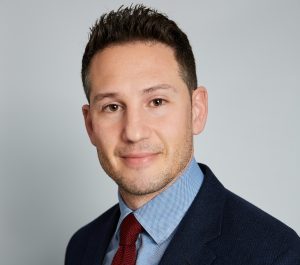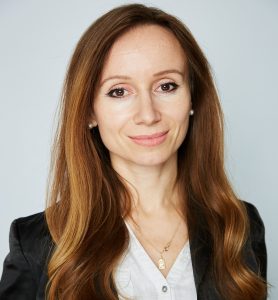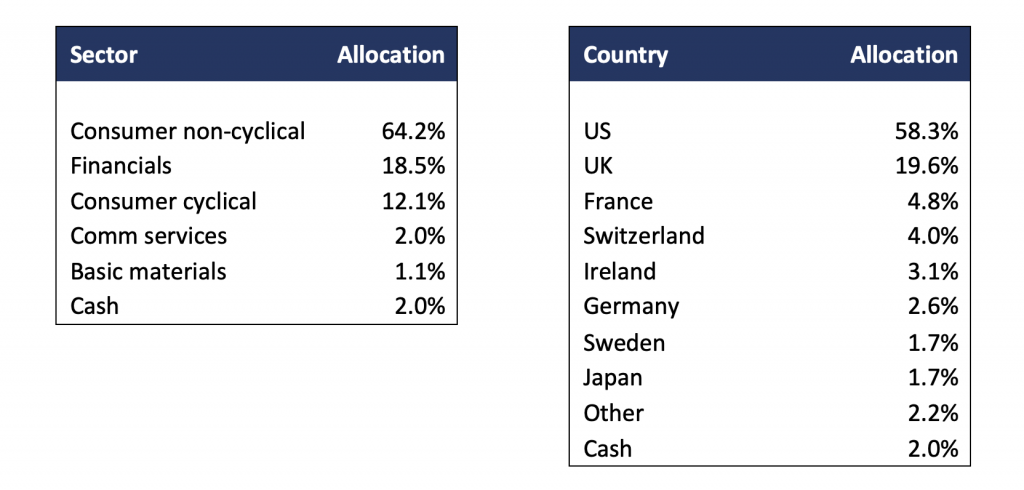Pacific Asset Management (PAM) is an independent asset manager based in London. PAM’s investment teams manage global assets in excess of $4.4 billion. PAM’s single manager Craft
Investment approach offers strategies where investment skill and experience have proven to
outperform, by focusing on markets that are less efficient, whilst their multi-asset teams provide technology enabled and innovate risk targeted fund ranges. PAM is committed to sustainable investing and offers a range of sustainable multi-asset portfolios, as well as an Article 8, global long only Longevity & Social Change fund.
 Dani Saurymper is the Portfolio Manager in Pacific’s Longevity and Social Change team. Prior to joining PAM in July 2021, Dani worked at AXA where he was Portfolio Manager of the AXA Framlington Longevity Economy fund. He was also Portfolio Manager of the AXA Framlington Health Fund and research lead for Health, Ageing & Lifestyle at AXA Framlington. Dani has over 20 years experience in the Healthcare sector.
Dani Saurymper is the Portfolio Manager in Pacific’s Longevity and Social Change team. Prior to joining PAM in July 2021, Dani worked at AXA where he was Portfolio Manager of the AXA Framlington Longevity Economy fund. He was also Portfolio Manager of the AXA Framlington Health Fund and research lead for Health, Ageing & Lifestyle at AXA Framlington. Dani has over 20 years experience in the Healthcare sector.
 Julia Varesko is a Senior Analyst in Pacific’s Longevity and Social Change Team. Prior to joining PAM in September 2021, Julia was a senior analyst covering diversified financials at JP Morgan. She has also held roles at Elsworthy Capital and Berenberg Bank as well as a prior period at JP Morgan where she spent six years covering the Capital Goods sector. Julia is a CFA Charterholder and holds an MSc in Accounting and Finance from the London School of Economics and a BSc in Economics from University College London.
Julia Varesko is a Senior Analyst in Pacific’s Longevity and Social Change Team. Prior to joining PAM in September 2021, Julia was a senior analyst covering diversified financials at JP Morgan. She has also held roles at Elsworthy Capital and Berenberg Bank as well as a prior period at JP Morgan where she spent six years covering the Capital Goods sector. Julia is a CFA Charterholder and holds an MSc in Accounting and Finance from the London School of Economics and a BSc in Economics from University College London.
AUM in the fund?
Currently $50 million as the fund was only launched in late October/early November 2021. We have lofty ambitions and believe the capacity for a fund such as ours could be at least $1 billion.
Do you split geographies/sectors?
Dani – we both weigh in with opinions and perspectives but given my background in pharmacology, and having run both a healthcare fund and the longevity fund at AXA my focus tends be more oriented towards healthcare along with Consumer related sectors.
Julia – the fund has significant exposure to consumer discretionary, consumer staples and diversified financials too. We divvy up between the two of us and often work together on a single idea and bring different perspectives. We look at micro and macro drivers to determine whether something could be a good investment. Another team member, Lucian, is involved in quantitative work around the purity of exposure to our theme and documenting ESG related manners. He helps us identify the investible universe and we refresh monthly how we score companies from an ESG perspective. There is a large amount of ESG data to process! I originally covered industrials, chemicals, parts of consumer discretionary but my biggest recent specialism was financials. And financials are a big focus for us.

Given that you are an Article 8 Fund, do you use external ESG rating agencies?
We use external sources such as MSCI, Sustainalytics and S&P. We know there are limitations with all data providers. MSCI, for example, rely on data supplied by companies. Scores from FTSE and MSCI might be very different for the same company as everyone’s methodology is different. So, if a company has very different scores, we might need to scrutinise that.
Which sectors do you exclude?
Alcohol, armaments, fossil fuel extraction & refining, fossil fuel power generation, gambling, iron & steel production, mining, nuclear power, pornography and tobacco.
The whole ethos of the fund acknowledges that the world is living longer. A child born in the developed world today has a better than 50% chance of living to 100. Given medical breakthroughs, we’ve got very good at not dying and are now able to live in old age with multiple diseases. As an Article 8 fund, we avoid companies that are detrimental to our lifespan or our “healthspan”, the period of our lives that we live free of illness. So, drinking and smoking are excluded.
Themes?
“Later living” – the over 80s will likely need assisted living, nursing at home or maybe they are in and out of hospital and require food services or physiotherapy along with other products and services such as health insurance or remote monitoring. We also consider what we do in our early years as this impacts what happens in our later years.
Another theme we focus on is “Education and Wellbeing” which encompasses areas such as fitness, nutrition, vision, dental care, vaccinations, diagnostic testing, etc…
“Lifelong learning”. The traditional three stage life model of education until perhaps 20, a 45-year career and then retirement – is not going to be possible for the majority of people, particularly if that retirement period is 35 years. Some jobs might become obsolete over that time frame. For example truck drivers might be usurped by driverless vehicles, builders may not be physically capable of doing their job as they age and so they need to retrain.
Certain industries, such as the medical profession, are going to be in greater demand. In the US, there is a predicted shortfall of 140,000 doctors in next 10 years. Yet as we age, we will become more dependent on doctors and nurses and consume more healthcare products and services. Therefore, companies that provide medical degrees will have a secular tailwind.
Minimum market cap?
Typically, we look for a minimum of $2 billion but we do have one holding under that threshold currently. We take into consideration liquidity as well as the risk reward of a potential investment. We do not invest in private companies.
Average holding period?
At least 5 years but the world is changing rapidly, and new technologies can displace incumbents so we keep challenging our investment theses for the companies we hold.
Average size of a holding and largest holding?
1 – 4% when we initiate a position. More than happy for those positions to grow larger but no single asset can represent more than 10% of the fund’s assets; holdings of more than 5% cannot in aggregate exceed 40% of the fund’s assets. (UCITS ruling).
Interesting holdings and why you invested?
Exact Sciences (EXAS) – is a molecular diagnostics company specialising in the detection of early-stage cancers. Exact has a unique diagnostic test called Cologuard – a non-invasive cancer screening test that helps detect colorectal cancer. The sooner you can catch something, the better the outcome. The company is also developing blood -based tests for liver, lung, pancreatic and oesophageal cancers, so rather than a biopsy (which is time consuming and can be extremely uncomfortable for a patient), they are seeking to launch a blood-based screening product.
Brunswick (BC) – Is a global leader in the marine recreation industry. They manufacture boats, engines (Mercury is their brand) as well as provide a comprehensive collection of parts and accessories. Boating is not the cheapest of leisure pursuits but “wealthspan” is another concept that impacts our thinking when it comes to investing in the age of longevity. Roughly 30% of the US population are over 55 but have greater than half of the wealth and not only have greater spending power but also greater spending resilience. The typical age of a boat owner in the US is late 40s/early 50s and as such we see Brunswick capitalising on this silver dollar.
EssilorLuxottica (EL.PA) – Is a global leader in the design, manufacture and distribution of ophthalmic lenses, frames and sunglasses. As we age, eyesight deteriorates, many people remain untreated, so it is a huge growth opportunity. 65% of all visually impaired people in the world are older than 50. There is a lot of technology that goes into a lens these days – whether it be single vision, varifocal, photochromatic, blue light filters or even myopia management and control. Essilor produces 100 million glasses and sunglasses – including the famous Ray-Ban and Oakley brands – as well as 565 million lenses. Ray-Ban Stories are smart glasses which capture images on the go and the company is in partnership with Meta in this developing technology.
Benchmark + performance?
MSCI World and 93.1% active share. Keen as an article 8 Fund to look at MSCI SRI. In 2022, the Fund outperformed the MSCI Growth Index by 14.2% (-7.2% vs -21.4% in GBP), the MSCI SRI Index by 5.9% (-7.2% vs 13.1% in GBP) as well as its reference benchmark by 1.3% (MSCI World -8.4% in GBP).
Are you active owners? Do you vote your proxy?
We use ISS SRI-aligned proxy voting service. It is one of a range of voting frameworks ISS offers and we see it as the most closely aligned to our focus on the social dimension of ESG. It is particularly rigorous in the sense that it targets both financial and social considerations in the voting process. One of the reasons we focus on the ‘Social’ pillar of ESG, is that our companies tend to really rely on human capital – healthcare, education, finance, it is all about human capital, you need to retain, attract and keep people happy in their workplace. ISS voting recommendations consider management compensation structures and company’s performance relative to ambitious diversity thresholds.
Do you have to meet management before you buy a stock?
We generally like to meet a management team – ideally in person, not virtually. We much prefer a face-to-face meeting and like to build a track record/trust.
Preferred method of meeting management? In-person, virtual, conferences, etc?
When we initially meet a company, we might prefer a group meeting and/or liaise with IR with a raft of questions. When we are getting more serious, we like to meet one-on-one. We also use external intelligence such as expert networks, industry conferences, scientists in a medical field so we don’t just leverage the insights from management – we cross reference via external sources. Additionally, we organise an annual investor fieldtrip to visit 15-20 Healthcare companies across Europe.
Outlook for 2023?
Dani – we do think about the macro even though a lot of our investments are less sensitive to it. Healthcare tends to outperform in a stagflationary environment although some is more discretionary than others. Ultimately, we’re looking for cash generative businesses with proven operating models and strong innovation characteristics that have exposure to the durable and resilient growth offered by the Longevity and Social Change theme.
Julia – we are positioned for a range of outcomes and feel ready for whatever 2023 brings. In 2022, we had war, inflation exceeding expectations, and interest rates going up rapidly. Our portfolio has a long-term vision, and the companies within it have a secular tailwind from demographic changes. We expect that “silver dollar” to be more resilient. Also, we look for high quality businesses with strong management and a track record of execution.
This interview was first published (3/27/23) in the digital edition of IR Magazine.
